Quadrilaterals
In parallelogram ABCD, two points P and Q are taken on diagonal BD such that DP = BQ (see the given figure).
Show that:
(i) ΔAPD ≅ ΔCQB
(ii) AP = CQ
(iii) ΔAQB ≅ ΔCPD
(iv) AQ = CP
(v) APCQ is a parallelogram
(i) In ΔAPD and ΔCQB,
∠ADP = ∠CBQ (Alternate interior angles for BC || AD)
AD = CB (Opposite sides of parallelogram ABCD)
DP = BQ (Given)
∴ ΔAPD ≅ ΔCQB (Using SAS congruence rule)
(ii) As we had observed that ΔAPD ≅ ΔCQB,
∴ AP = CQ (CPCT)
(iii) In ΔAQB and ΔCPD,
∠ABQ = ∠CDP (Alternate interior angles for AB || CD)
AB = CD (Opposite sides of parallelogram ABCD)
BQ = DP (Given)
∴ ΔAQB ≅ ΔCPD (Using SAS congruence rule)
(iv) As we had observed that ΔAQB ≅ ΔCPD,
∴ AQ = CP
(v) From the result obtained in (ii) and (iv),
AQ = CP and
AP = CQ
Since opposite sides in quadrilateral APCQ are equal to each other, APCQ is a parallelogram.
Sponsor Area
Some More Questions From Quadrilaterals Chapter
In parallelogram ABCD, two points P and Q are taken on diagonal BD such that DP = BQ (see the given figure).
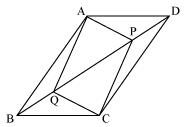
Show that:
(i) ΔAPD ≅ ΔCQB
(ii) AP = CQ
(iii) ΔAQB ≅ ΔCPD
(iv) AQ = CP
(v) APCQ is a parallelogram
ABCD is a parallelogram and AP and CQ are perpendiculars from vertices A and C on diagonal BD (See the given figure). Show that
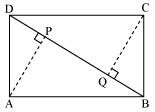
(i) ΔAPB ≅ ΔCQD
(ii) AP = CQ
In ΔABC and ΔDEF, AB = DE, AB || DE, BC = EF and BC || EF. Vertices A, B and C are joined to vertices D, E and F respectively (see the given figure). Show that
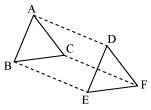
(i) Quadrilateral ABED is a parallelogram
(ii) Quadrilateral BEFC is a parallelogram
(iii) AD || CF and AD = CF
(iv) Quadrilateral ACFD is a parallelogram
(v) AC = DF
(vi) ΔABC ≅ ΔDEF.
ABCD is a trapezium in which AB || CD and AD = BC (see the given figure). Show that
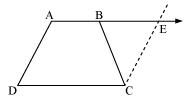
(i) ∠A = ∠B
(ii) ∠C = ∠D
(iii) ΔABC ≅ ΔBAD
(iv) diagonal AC = diagonal BD
ABCD is a trapezium in which AB || DC, BD is a diagonal and E is the mid – point of AD. A line is drawn through E parallel to AB intersecting BC at F (see the given figure). Show that F is the mid-point of BC.
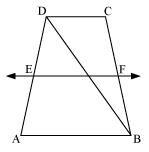
Mock Test Series
Sponsor Area
NCERT Book Store
NCERT Sample Papers
Sponsor Area